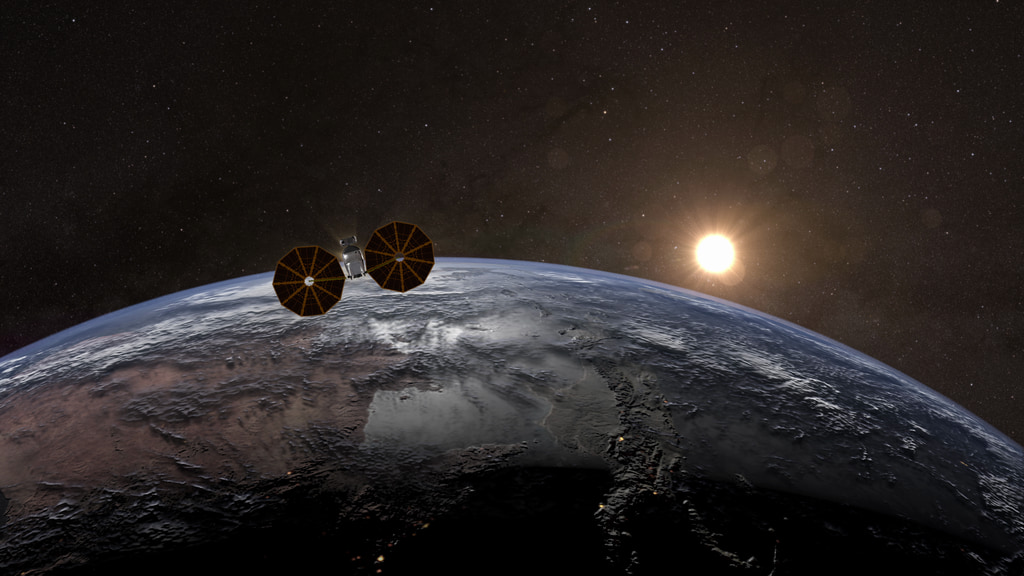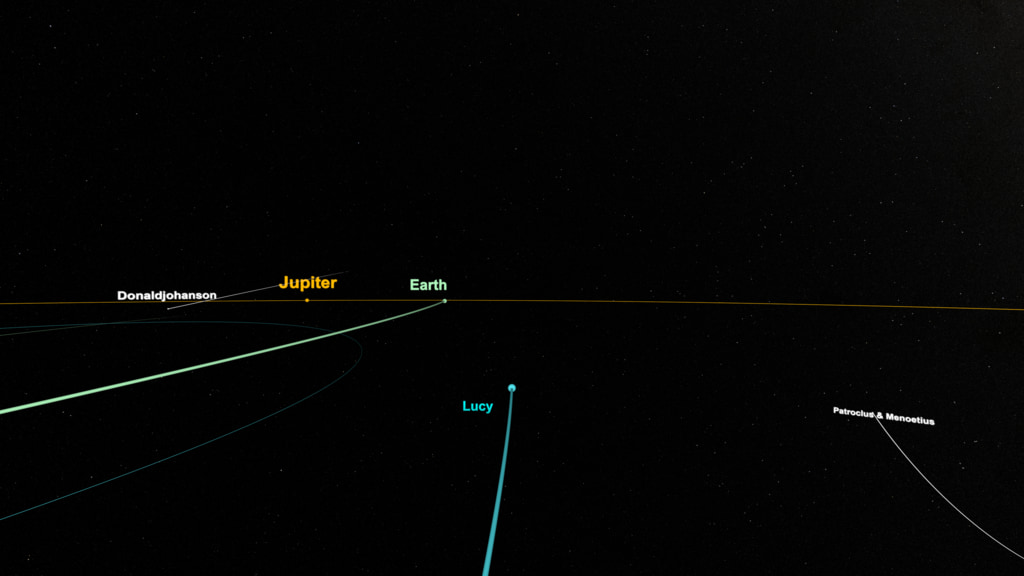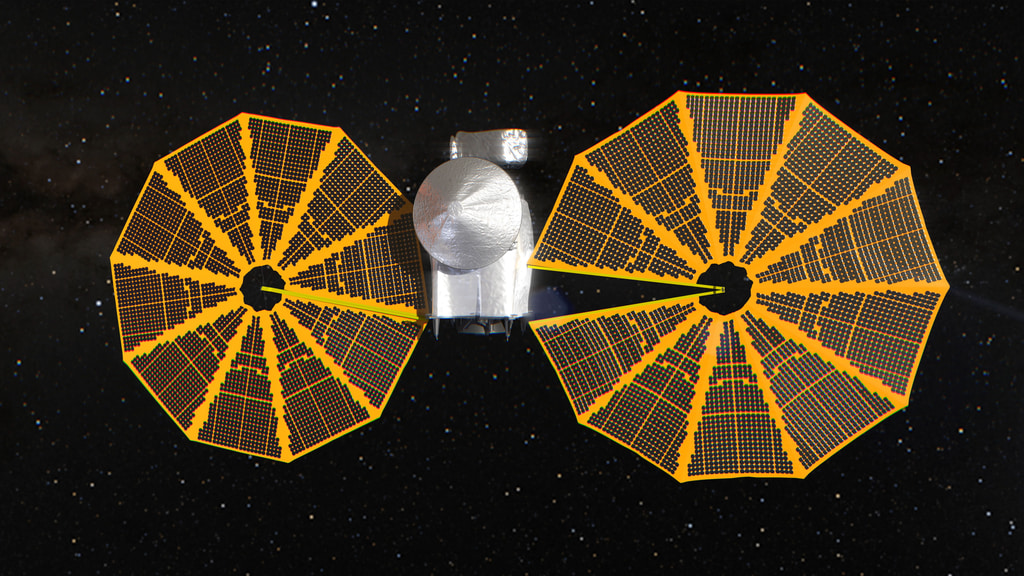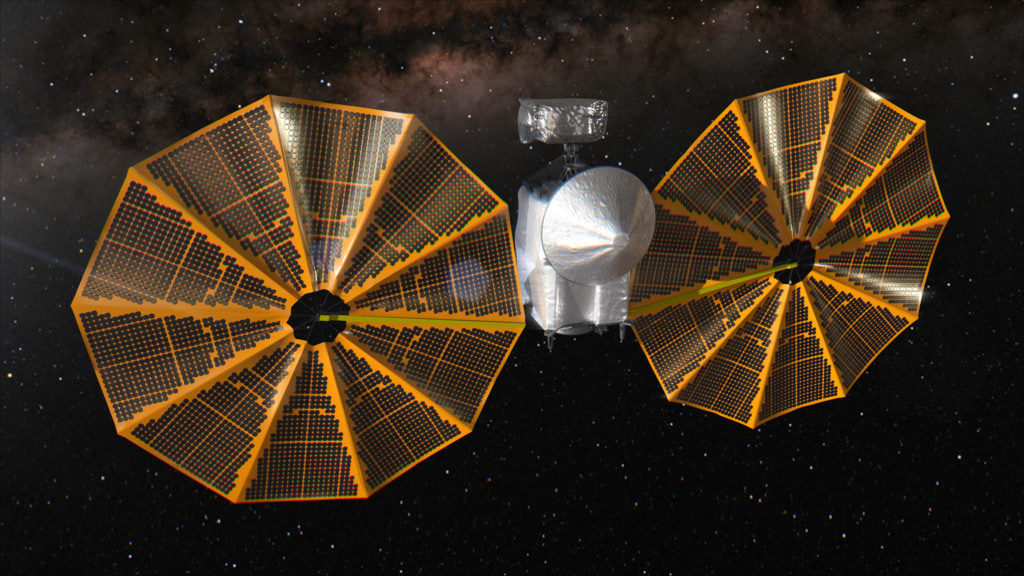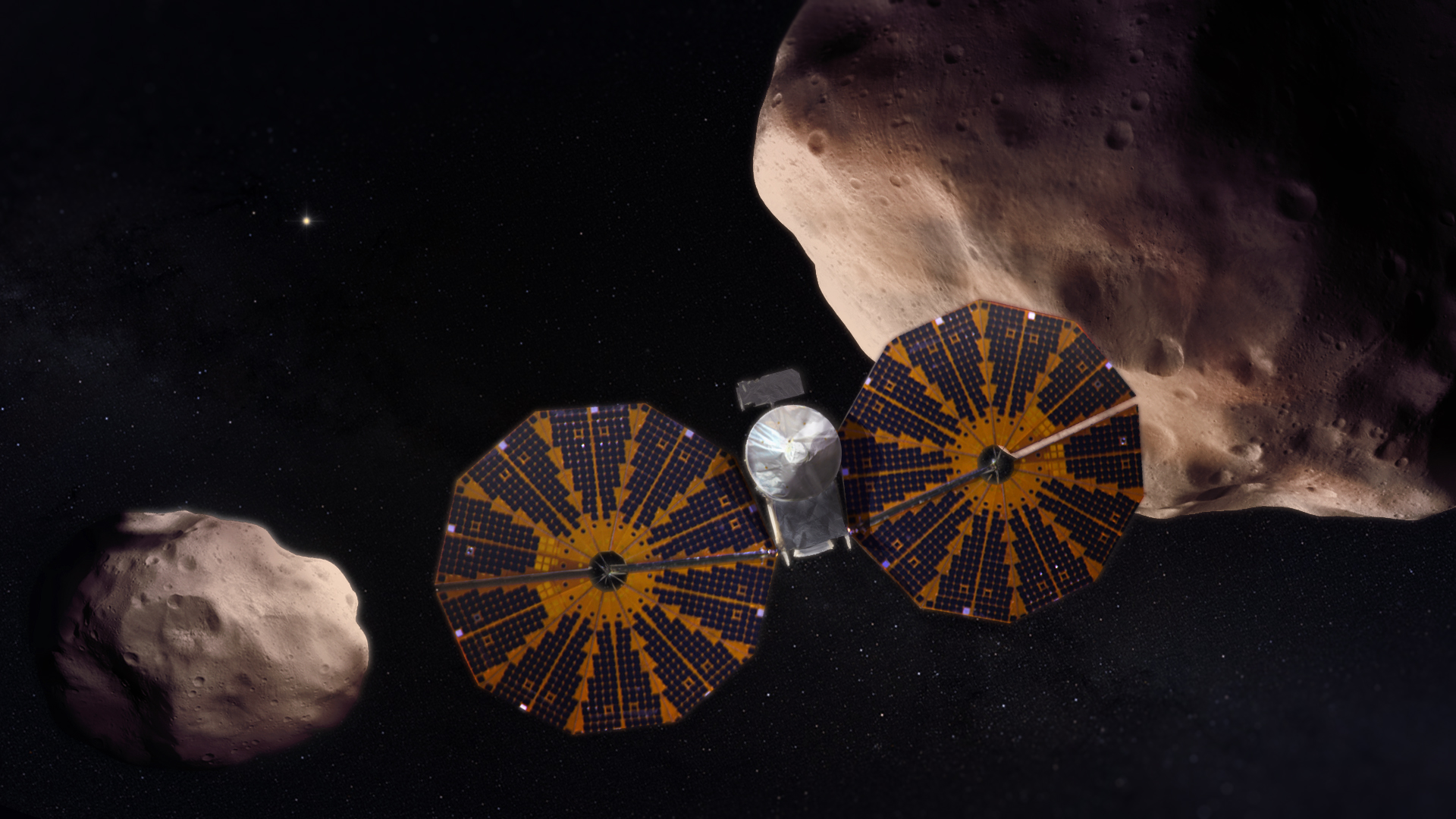Lucy Mission Animations
Lucy flies by its final target, the binary asteroid Patroclus/Menoetius. When it completes this flyby, Lucy will have visited an unprecedented seven asteroids.
Beyond the asteroid belt are "fossils of planet formation" known as the Trojan asteroids. These primitive bodies share Jupiter's orbit, and may hold clues to the formation and evolution of our solar system. NASA is preparing to explore the Trojan asteroids for the first time with a mission called Lucy, which will launch in 2021 and visit seven asteroids over twelve years. Like the famous hominid fossil for which it is named, the Lucy mission will improve our understanding of the ancient past, and be the first to uncover these fossils of planet formation.
ARTIST CONCEPT Lucy's seven targets: the binary asteroid Patroclus/Menoetius, Eurybates, Orus, Leucus, Polymele, and the main belt asteroid DonaldJohanson.
Lucy spacecraft turntable animation on black background
Lucy spacecraft turntable on white background
Lucy opening title card
One Mission title card
Eight Asteroids title card
Twelve years title card
Donald Johanson asteroid turntable (artist concept)
Eurybates asteroid turntable (artist concept)
Leucus asteroid turntable (artist concept)
Orus asteroid turntable (artist concept)
Patroclus asteroid turntable (artist concept)
Polymele asteroid turntable (artist concept)
Menoetius asteroid turntable (artist concept)
For More Information
See the following sources:
Credits
Please give credit for this item to:
NASA's Goddard Space Flight Center Conceptual Image Lab
-
Animators
- Jonathan North (USRA)
- Michael Lentz (USRA)
-
Producers
- Dan Gallagher (USRA)
- James Tralie (ADNET Systems, Inc.)
-
Technical support
- Aaron E. Lepsch (ADNET Systems, Inc.)
Release date
This page was originally published on Monday, October 21, 2019.
This page was last updated on Wednesday, May 3, 2023 at 1:45 PM EDT.
